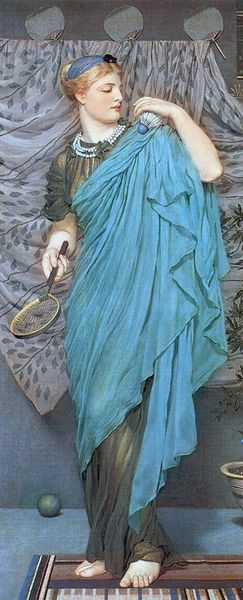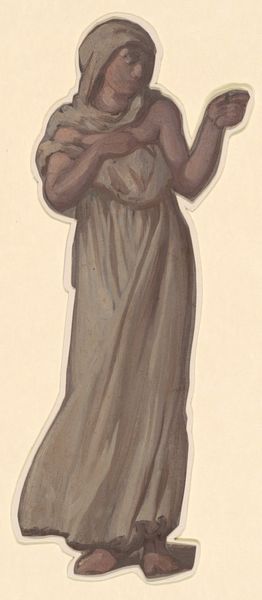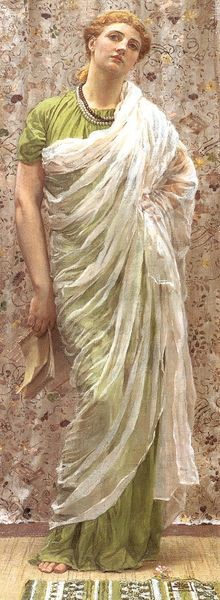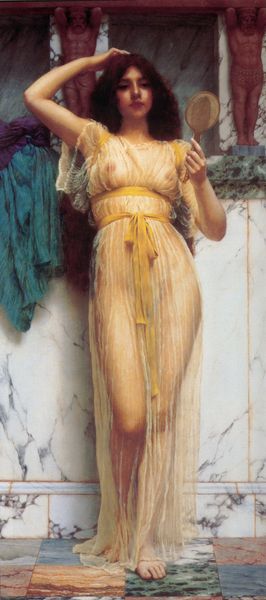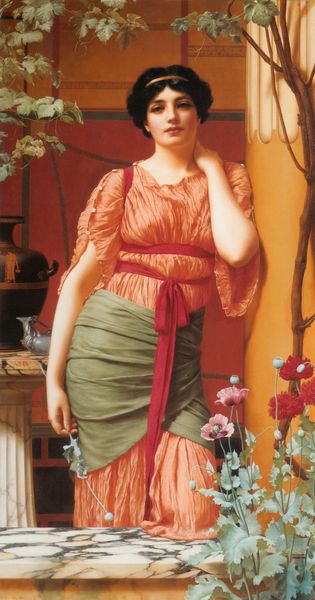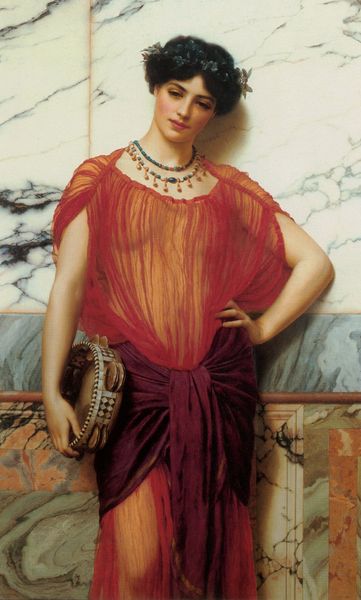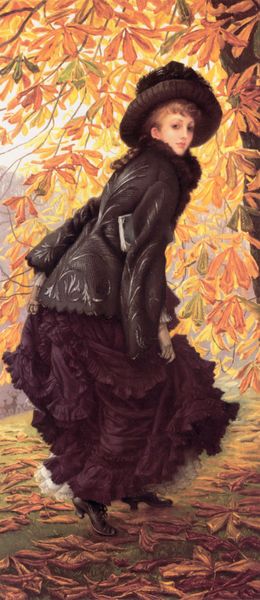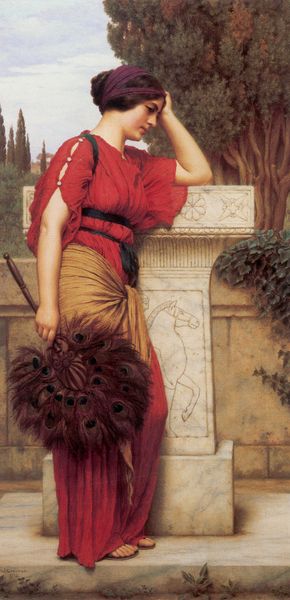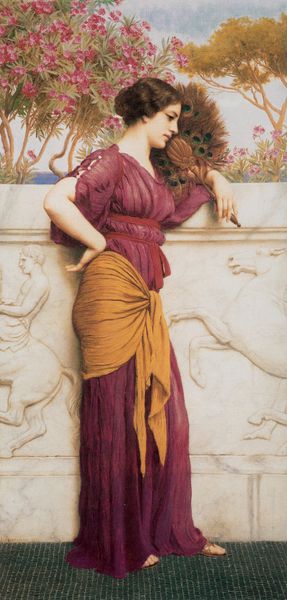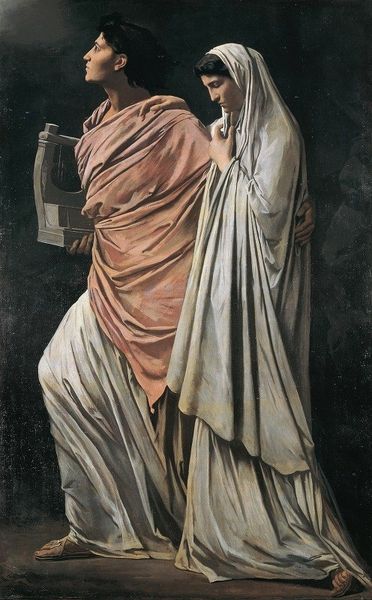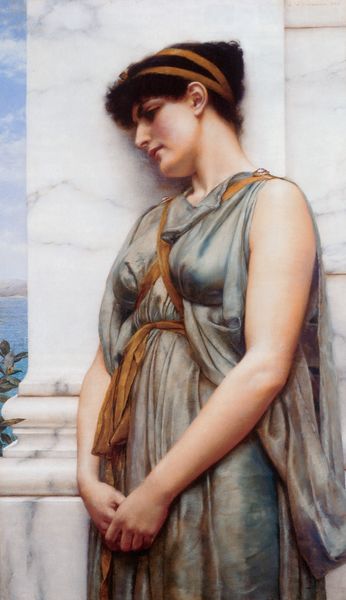
Dimensions: 64 x 29.5 cm
Copyright: Public domain
Curator: Standing before us, we have John William Godward’s "Ianthe" from 1889, rendered in oil on canvas and presently held in a private collection. It immediately strikes you, doesn’t it? Editor: Yes, instantly! There’s a stillness, a sort of elegant languor. The cool tones and the way the marble backdrop contrasts with the warmth of her skin and drapery...it feels almost theatrical, deliberately composed. Curator: Godward, aligning himself with Neoclassicism, often depicted women in classical settings, and this work is no exception. The historical context here is crucial. It was a period deeply engrossed in romanticized views of antiquity, visible here via the Greek or Roman aesthetic and mythology portrayed in her posture, apparel, and title. Editor: I’m intrigued by the textiles. The olive-green drapery, the gold bands on her arms, the contrasting smooth marble she leans against - the sheer detail invested in these material representations seems almost obsessive, more like a high end clothing ad from the late 1800’s. You can almost feel the weight and texture of the fabrics and see how they adorn the wealthy. How much of this image can we attribute to consumerism from that period? Curator: Interesting question. Godward was painting for a specific market. The upper middle class were displaying these works in their homes and commissioning copies or originals to showcase their supposedly impeccable, elevated, “classic” taste and education. The image served as a status symbol that allowed the collector to embody, and perform, their association with an age of intellectual refinement, or their ideals of feminine beauty and virtue, accessible and affordable to new moneyed classes like never before. Editor: I suppose these depictions helped validate their access to an elevated status through art, but I keep circling back to her dress. How it gathers and folds, how it accentuates yet modestly conceals. It makes me think about the labor involved in producing and caring for such elaborate garments during that era, highlighting how this art truly reflects and serves to further perpetuate inequality. It almost suggests who or what she must have to perform her lifestyle, perhaps something not afforded to her laborers? Curator: Certainly. The presentation of wealth and leisure is, in many ways, dependent on exploited labour and idealized or controlled femininity. Her passivity becomes her allure in an image that obscures social realities, inviting viewers into a fantasy where such considerations are deliberately absent. Editor: Food for thought on how classical aesthetics aren't apolitical. Seeing the process behind the composition gives insight to who that performance of aesthetics serve and how images impact the economy around it. Curator: Indeed. By studying its social dimensions, as well as its material presence, we see that this seemingly timeless image is deeply embedded in a web of specific historical conditions.
Comments
No comments
Be the first to comment and join the conversation on the ultimate creative platform.
